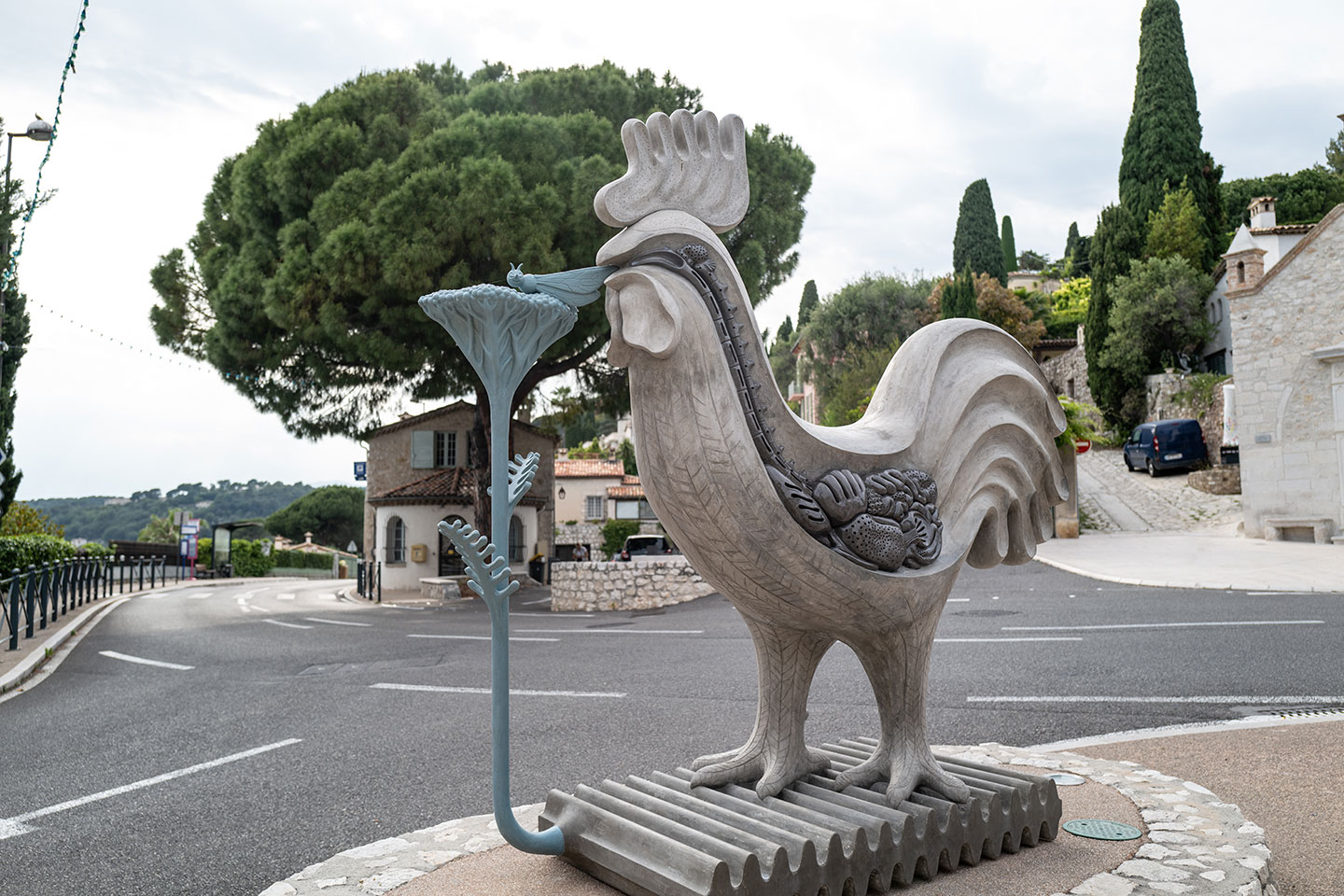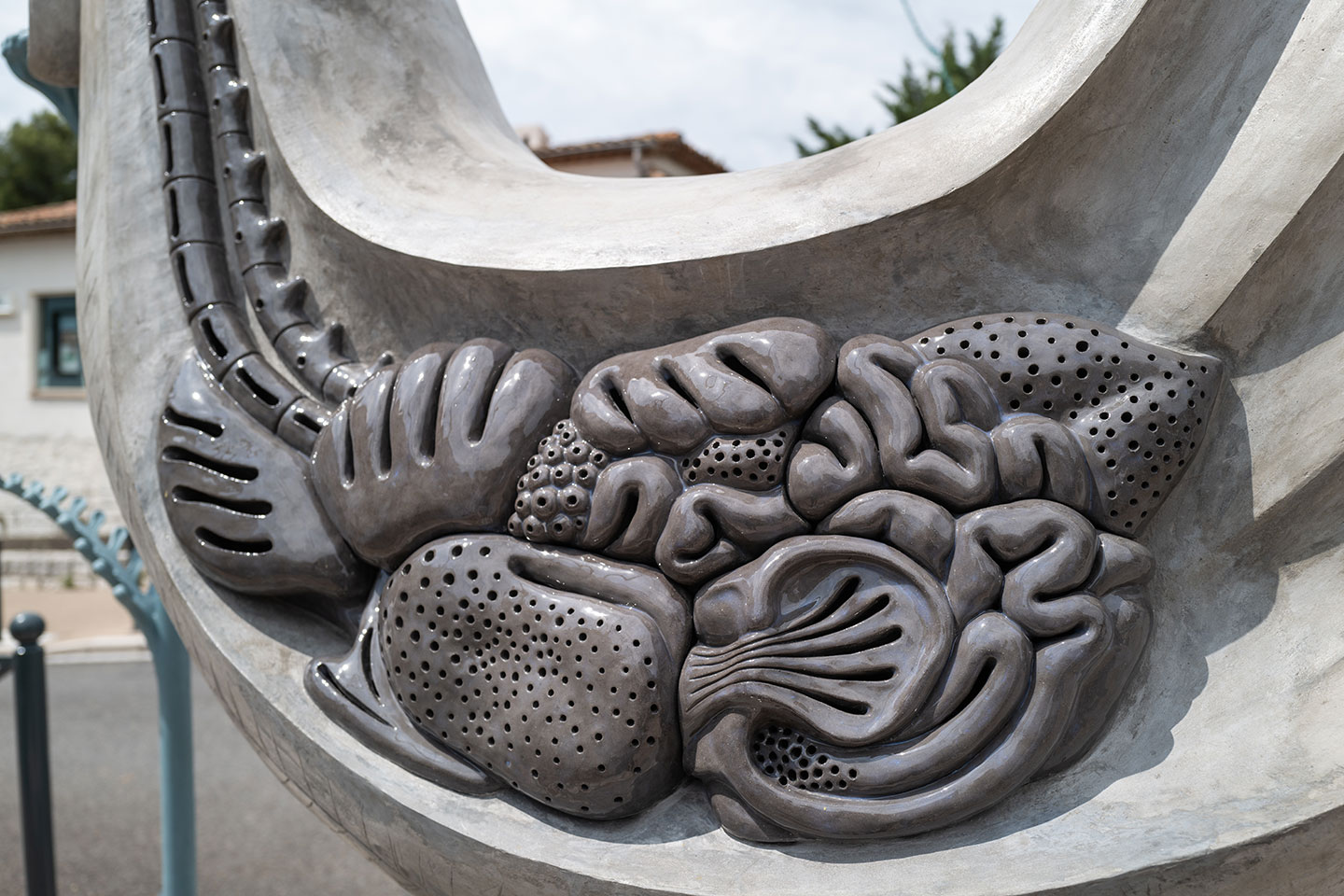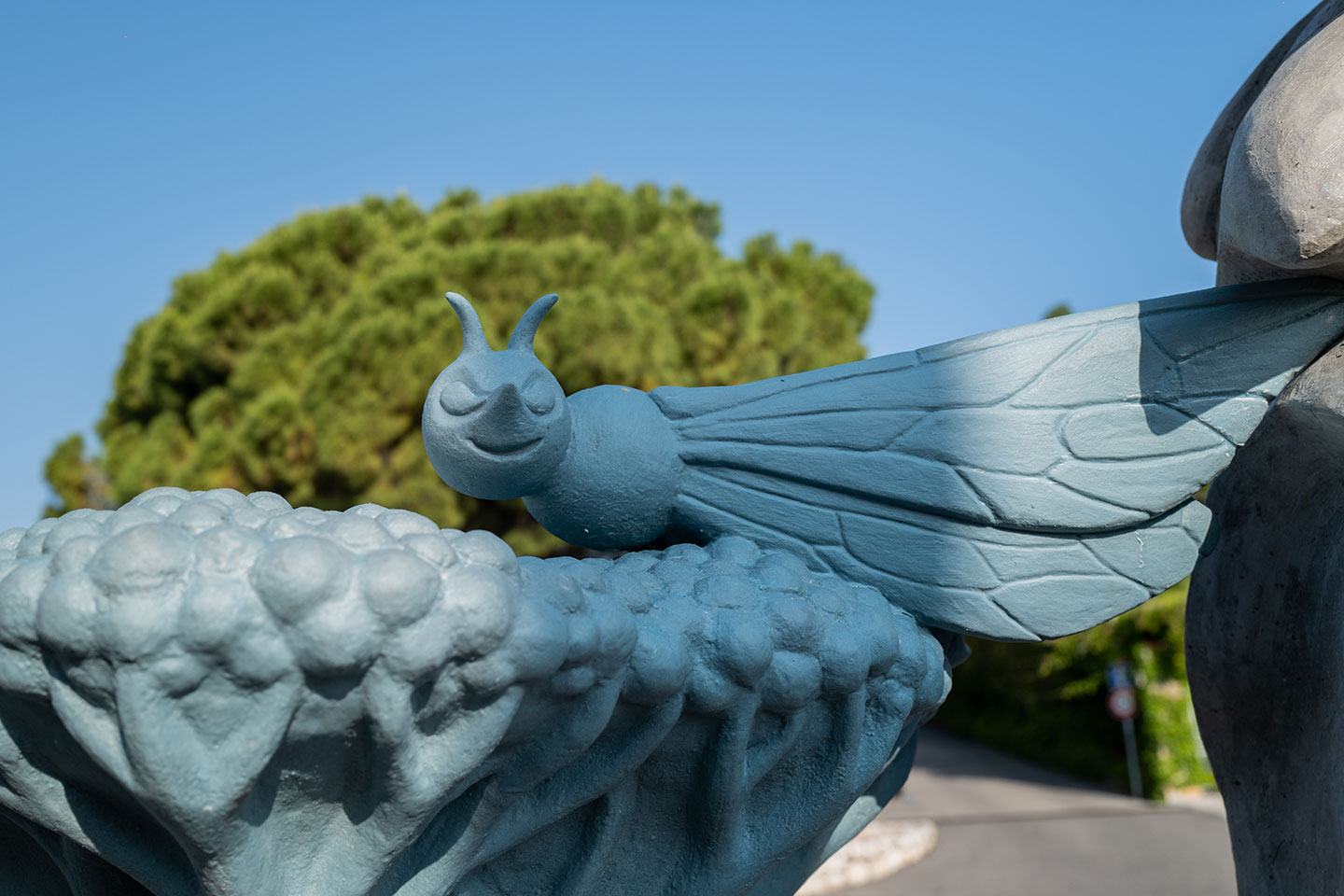Anna Hulačová
From the Food Chain to Eternity, 2023
« L’oeuvre d’art que j’ai réalisée pour la biennale est un coq marchant sur un piédestal en forme de radiateur. Elle fait référence à la chaîne alimentaire dans la nature, où les différentes espèces de l’écosystème sont interdépendantes et reliées par le tube digestif. Elle fait également référence au problème de l’extinction des insectes pollinisateurs, qui est l’une des causes de l’effondrement de ce cycle naturel.
Un tube pousse à partir de l’appareil de chauffage (le socle) et se transforme en une plante à fleurs sur laquelle se trouve un insecte pollinisateur mangé par un coq. Des pièces de céramique émaillée sont encastrées dans le coq, représentant des habitations fonctionnelles très spécifiques pour les insectes, des maisons pour les pollinisateurs sauvages. Les pièces de céramique, les habitations des insectes, représentent également le tube digestif interne du coq, mais ne sont visibles que sur un seul côté du corps. L’autre côté du coq est une forme concrète stylisée inspirée des cultures populaires qui célébraient le coq comme un animal noble.
J’ai choisi le coq parce que cet oiseau mâle est un symbole très populaire de la vie rurale depuis des millénaires et qu’il est encore aujourd’hui porteur de nombreuses significations. Par exemple, le problème de l’agriculture contemporaine et sa relation avec le territoire. L’espace vital de tous les animaux de ferme se réduit en raison de l’augmentation de l’élevage de certaines espèces telles que la volaille. Ce phénomène est lié à l’évolution du paysage et à la disparition des insectes pollinisateurs, qui sont fortement affectés par l’évolution des pratiques agricoles et le changement climatique. Et comme les insectes sont aussi la nourriture naturelle des oiseaux, la chaîne alimentaire s’en trouve perturbée.
Notre dépendance au monde animal est similaire à notre rapport à l’énergie, dont nous dépendons en tant que société et au sujet de laquelle nous nous interrogeons de plus en plus quant à son origine et son impact, en relation avec la crise climatique et environnementale. Dans la sculpture du coq, ce thème écologique est symbolisé par le radiateur, qui devient un socle de soutien pour le fonctionnement de notre civilisation, mais qui montre aussi la transformation de notre dépendance humaine en une forme végétale et animale. Ces relations évoluent vers des formes hybrides et surréalistes – le radiateur se transforme en une plante, qui est pollinisée par des insectes qui s’infiltrent ensuite dans le corps de l’oiseau, et se transforme encore en un autre monde, paradoxalement un abri, une habitation. »
Anna Hulačová est représentée par Hunt Kastner
“The artwork I made for the biennale is a rooster walking on a pedestal in the form of a radiator, a heater. It refers to the food chain in nature, where different species of the ecosystem are interdependent and interconnected through the digestive tract. It also refers to the problem of the extinction of insect pollinators which is one of the causes of the collapse of this natural cycle.
A tube grows out of the heater (the pedestal) and turns into a flowering plant on which sits an insect pollinator eaten by a rooster. Glazed ceramic pieces are embedded into the rooster, representing very specific functional insect dwellings, homes for wild pollinators. The ceramic parts, the insect dwellings, also represent the internal digestive tract of the rooster but are visible on only one side of the body. The other side of the rooster is a stylized concrete form inspired by folk cultures which celebrated the rooster as a noble animal.
I chose the rooster because this male bird has been a very popular symbol of rural life for millennia and carries with it many meanings even today. For example, the problem of contemporary agriculture and its relationship to the landscape. The living space for all farm animals is shrinking due to the increased breeding of certain species such as poultry. This is linked to the changing landscape and the disappearance of insect pollinators which are being significantly affected by changing farming practices and climate change. And as insects are also the natural food of birds, the food chain is thus disrupted.
Our dependence on the animal world is identical to our relationship with energy, on which we depend as a society and which we are increasingly questioning the origins and impact of, in relation to the climate and environmental crisis. In the rooster sculpture, this ecological theme is symbolized by the radiator, which becomes a supporting pedestal for the functioning of our civilization, but also shows the transformation of our human dependence into a plant and animal form. These relationships reach hybrid and surreal forms – the radiator transforms into a plant, which is pollinated by insects which then permeate the body of the bird and is further transformed into another world, paradoxically a shelter, a dwelling.“
Anna Hulačová is represented by Hunt Kastner
From the Food Chain to Eternity, 2023
Béton, métal, céramique, matériau d’étanchéité
Concrete, metal, ceramic, sealing material
265 x 230 x 90 cm
Courtesy of the artist and hunt kastner, Prague
Avec le soutien du Centre Tchèque Paris
With the support of the Czech Center Paris



